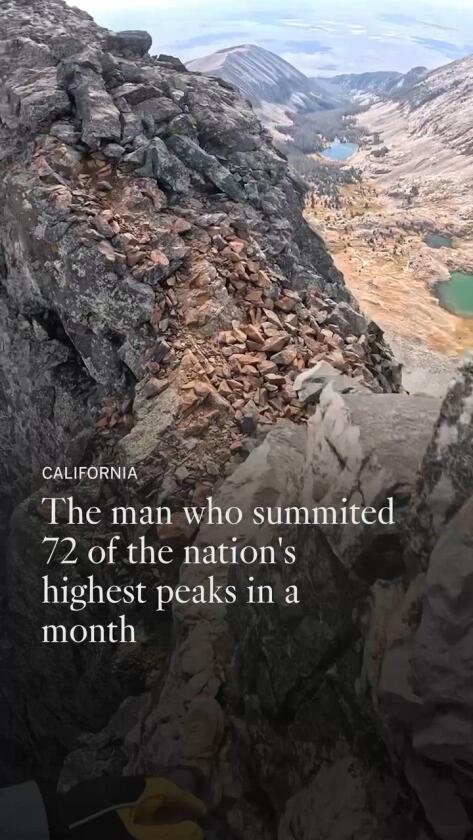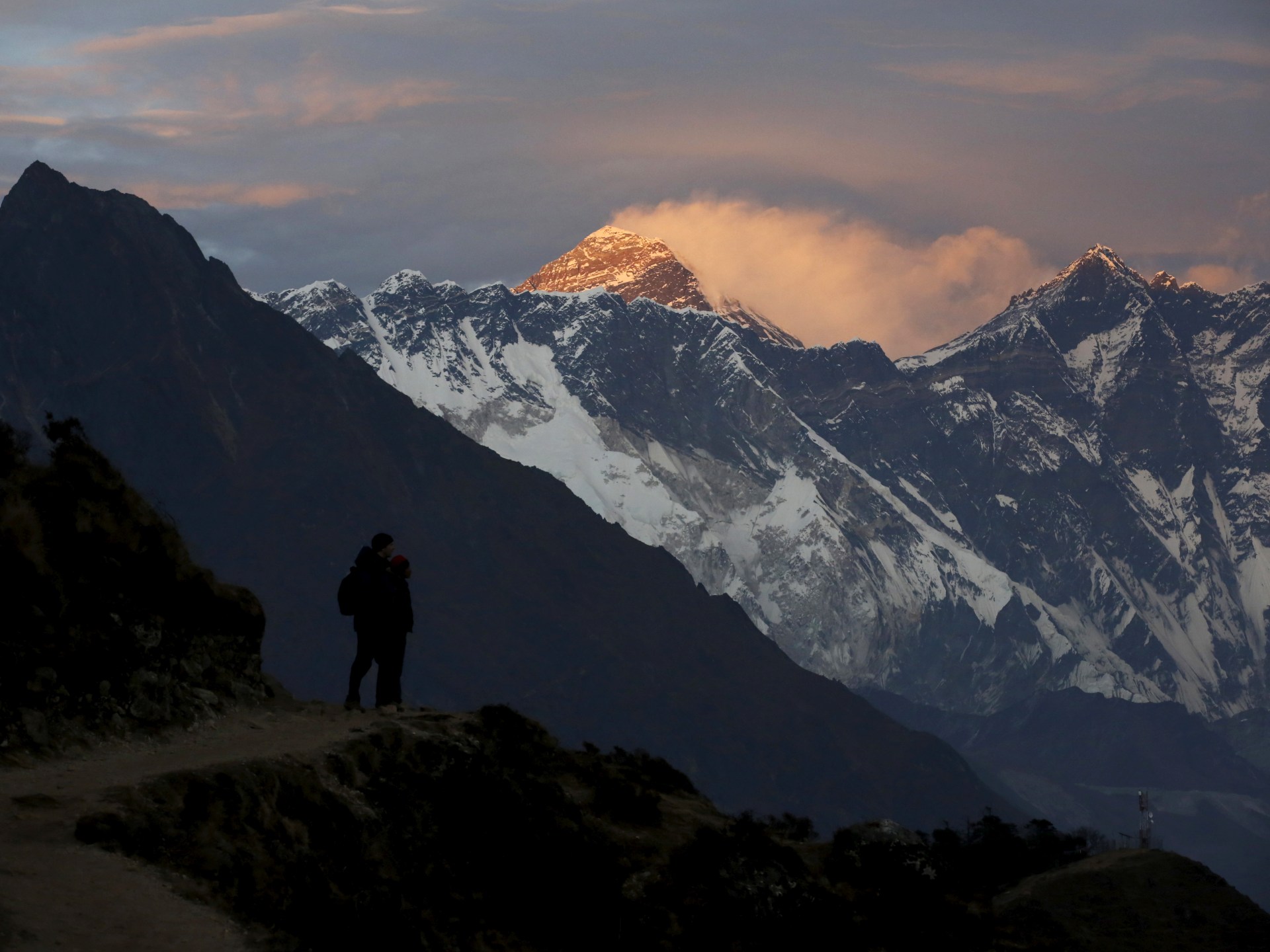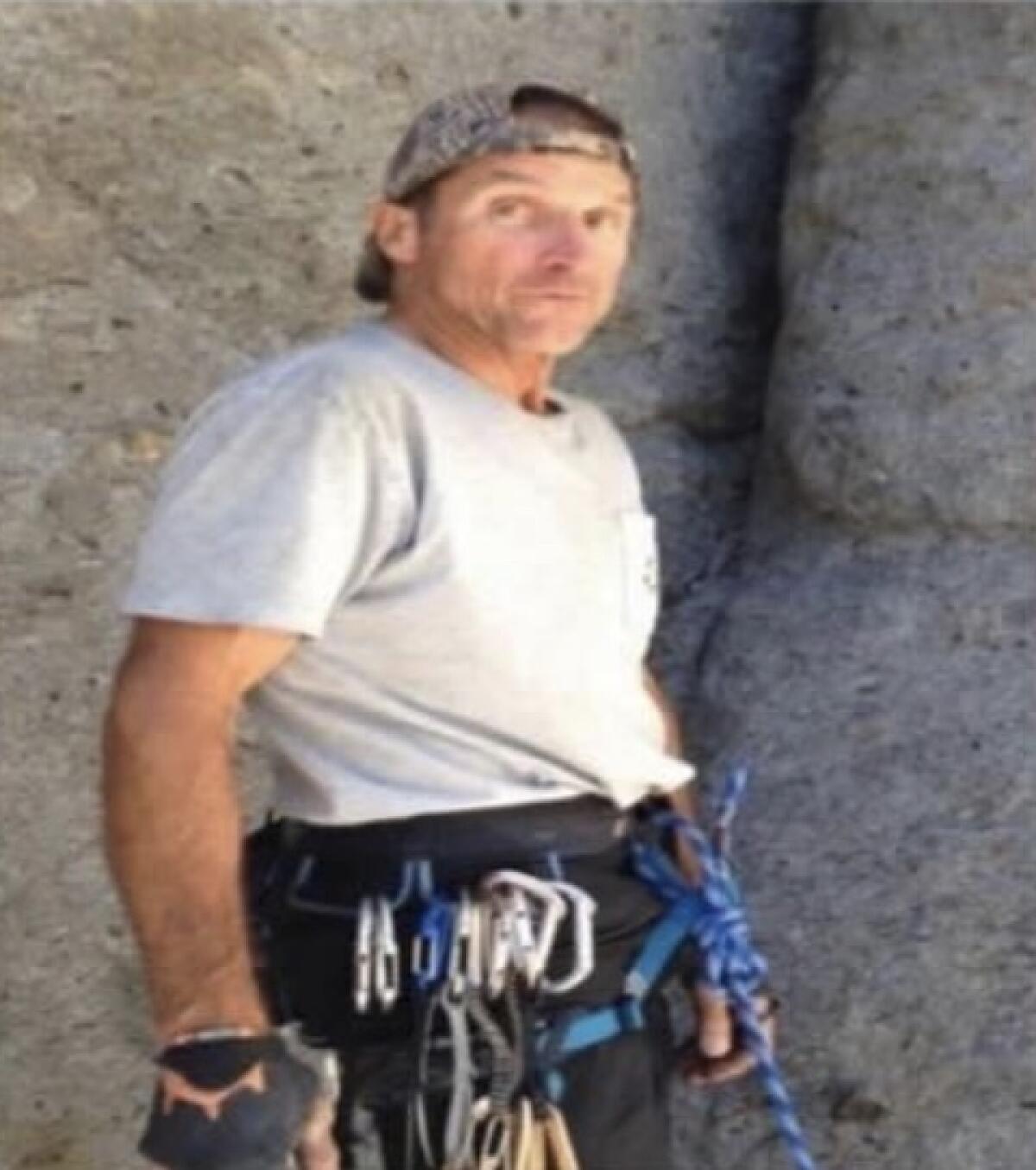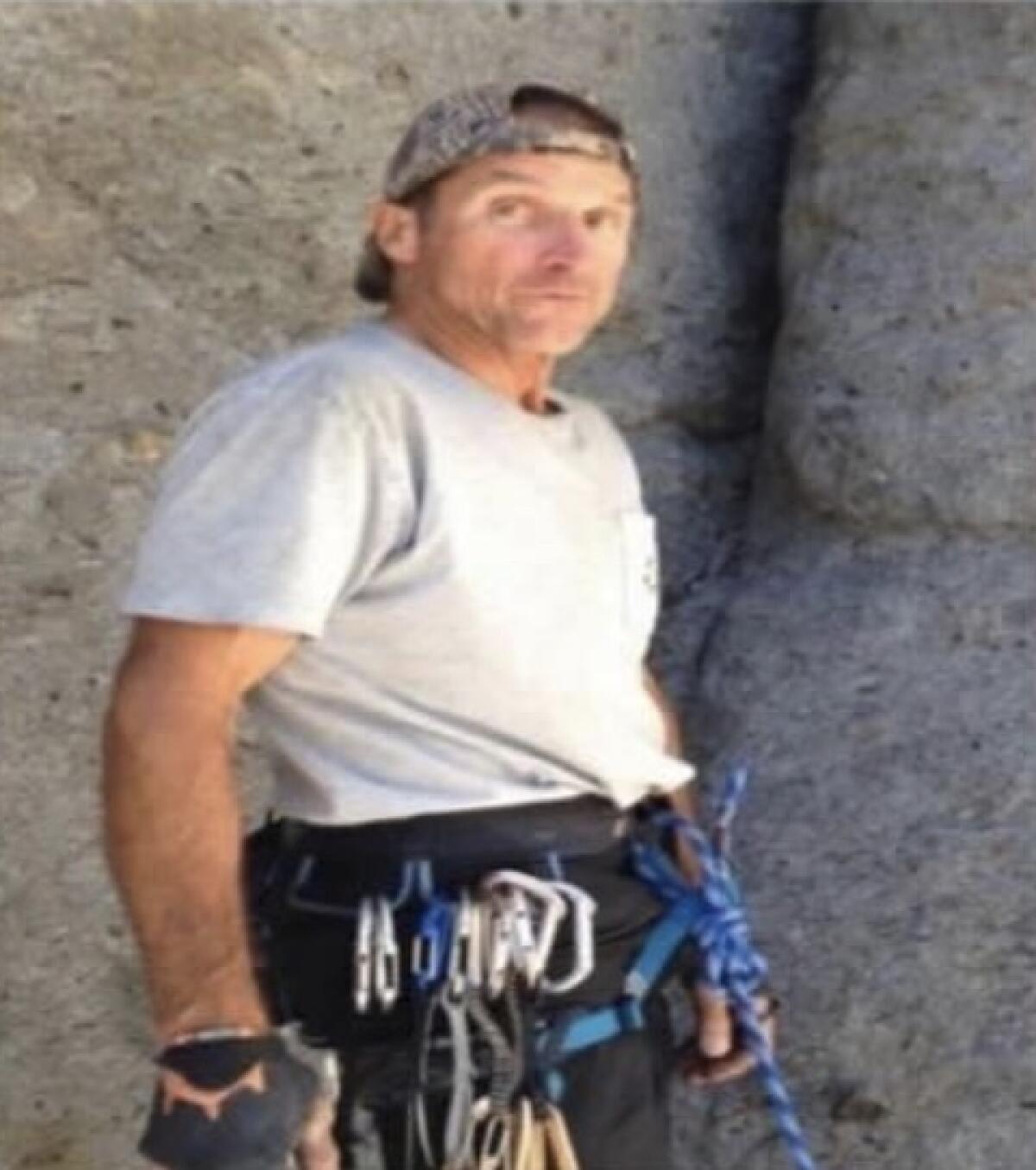How a speed climber topped 72 of nation’s highest peaks in 31 days
Kilian Jornet, one of the world’s most accomplished mountaineers, did something this month that left even other elite athletes gasping: He climbed all 72 summits in the contiguous United States that stand over 14,000 feet tall.
In 31 days.
That’s like climbing California’s Mt. Whitney — the nation’s tallest mountain outside of Alaska — two-and-a-half times per day, every day, for a month.
But reaching so many summits, so quickly, was only half the battle. In fact, it was “the fun part,” a surprisingly rested-looking Jornet said in a Zoom interview from Seattle earlier this month, three days after summiting Mt. Rainier in knee-deep snow to complete the grueling journey, which he started in early September.
The hard part was negotiating the spaces in between.
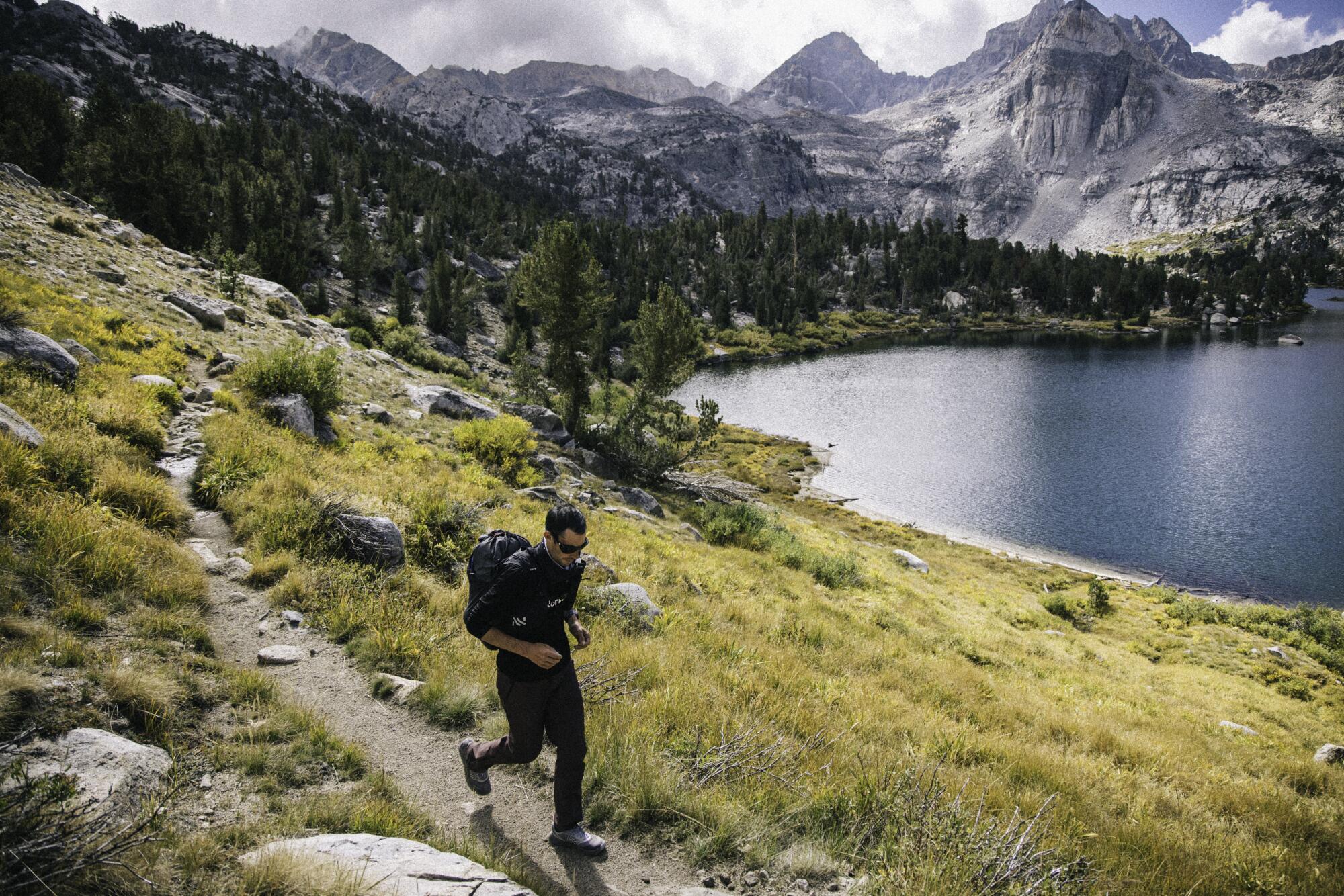
Spanish mountaineer Kilian Jornet treks through the Sierra Nevada range known as the Normans 13, which connects 13 summits over 14,000 feet.
(Andy Cochrane)
“If you’re driving, you see the landscape,” Jornet explained. “But you don’t feel it.”
OK, how do you feel it?
By running the hundreds of miles of remote mountain ridges, and biking the thousands of miles of desolate highway, that separate the towering summits scattered across Colorado, California and Washington.
In total, Jornet covered 3,198 miles under his own power. He biked 2,568 miles. He ran 629 miles. He climbed 403,638 vertical feet.
-
Share via
Tommy Caldwell, arguably the best technical rock climber of his generation and the first to climb Yosemite’s nearly impossible Dawn Wall, followed Jornet’s progress on Instagram. When the Spaniard finished, Caldwell posted, “my mind is officially blown.”
Like many elite climbers, Jornet, 37, slips into a stoic, been-there-done-that voice when describing mountain conditions that would terrify mere mortals. But he broke character, briefly, talking about climbing the summit of Mt. Shasta in Northern California.
As often happens on that free-standing volcano, a howling gale struck just as Jornet approached the 14,162-foot summit.
Shaky video shot by a climbing partner shows Jornet’s trekking poles flailing and his feet sliding around on the ice as he struggles — and fails — to remain upright in what sounds like a hurricane.
“It was crazy,” he conceded, “probably the windiest day I have ever had in the mountains.”
Asked why, exactly, he puts himself through so much agony, he snapped back into aw-shucks mode. He sank into his comfy seat, smiled with the confidence of a man who has parried that question a thousand times, and said:
“Why not?”
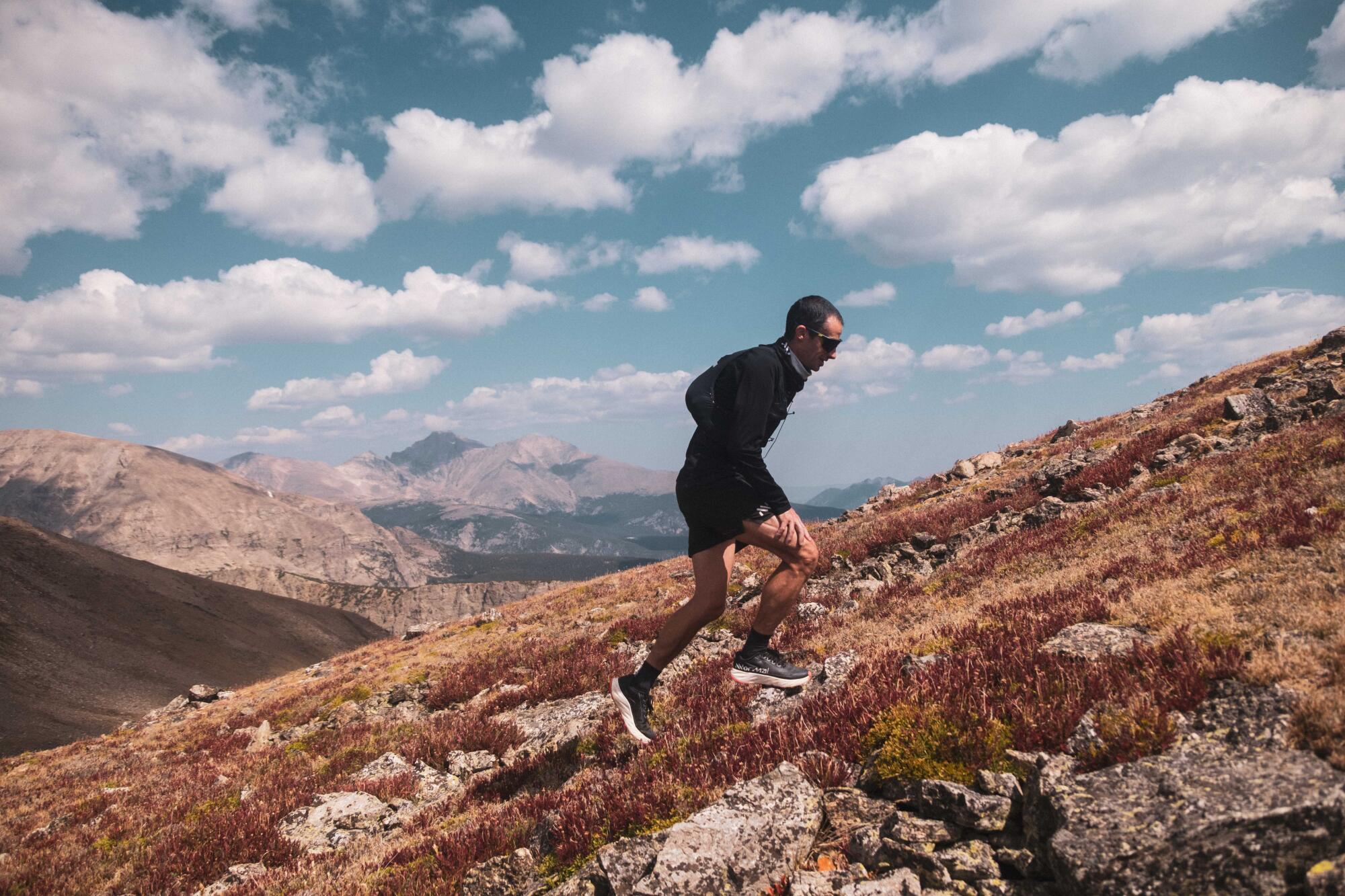
Spanish mountaineer Kilian Jornet climbed 72 summits over 14,000 feet in the contiguous U.S. in 31 days.
(Nick Danielson)
In an age saturated with professional outdoor athletes competing for social media attention and lucrative sponsorships — and in a world where the most iconic summits have been climbed, the biggest waves have been surfed and the wildest rivers have been run — one fashionable way to stand out is by setting a fastest known time, or “FKT.”
Jornet’s jaunt over and between those 72 summits, which he dubbed “States of Elevation” and gorgeously documented for his 1.8 million followers on Instagram, was, by all accounts, the fastest known time. It was also the only known time. Apparently, nobody else has tried to link all of those summits together in a single, human-powered push.
“Yes, it’s hard,” Jornet said with a laugh when asked if the constant, grinding pain was worth it. But after a while, “you get used to the discomfort, it’s just part of it, it doesn’t really bother you.”
The finale of Jornet’s 72-peak feat was a 14,441-foot volcano covered with glaciers, one of the broadest and most visually imposing mountains on the planet. Few people even attempt to climb Mt. Rainier this time of year because the weather can be so brutal.
As Jornet pedaled closer to the peak, it started to rain down in the flats, so he knew that meant snow on the mountain.
Crossing the glaciers with their immense, yawning crevasses hidden by fresh snow would have been too dangerous, so Jornet chose a steep and challenging rock route known as Success Cleaver. But even that was buried in knee-deep snow.
After summiting Mt. Rainier, Jornet posted that his U.S. journey was, “never about just the numbers, but rather a deep connection to wild places, and true test of resilience in body and mind.”
Anyone else claiming that might have been met with eye rolls, but Jornet is one of the few outdoor athletes who probably doesn’t need to pad his resume: He cemented his legacy as one of the all-time greats long ago.
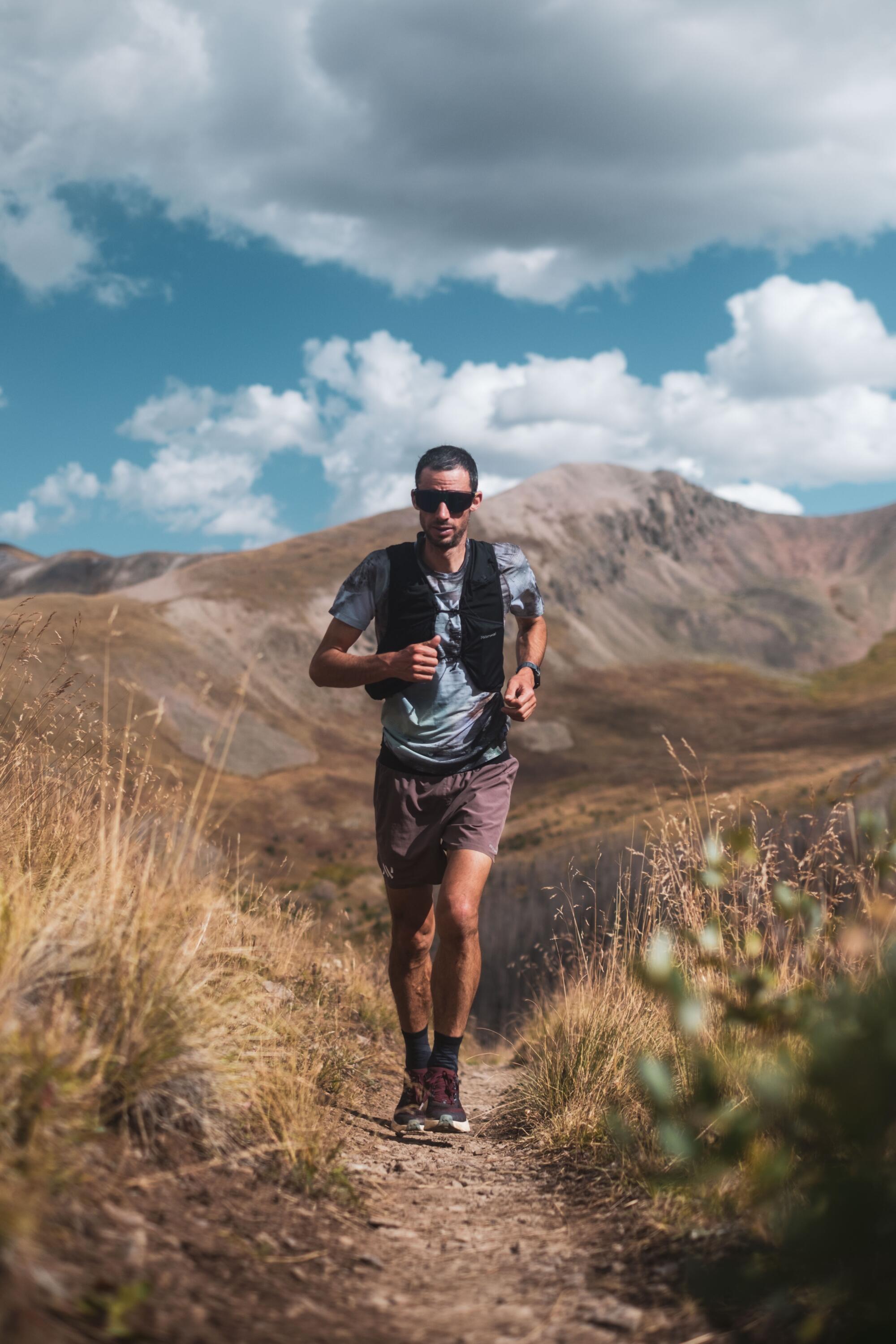
Spanish mountaineer Kilian Jornet hikes in the San Juan Mountains of Colorado in September.
(Nick Danielson)
Born just outside of Barcelona in 1987, he grew up in a ski area in the Pyrenees where his father was a mountain guide. He climbed his first mountain over 10,000 feet when he was 5.
At 20, he won the first of six titles in the Sky Runner World Series, an international competition consisting of long, high-altitude foot races that test speed and endurance on steep mountainsides.
At 26, he set FKTs for climbing Switzerland’s Matterhorn and France’s Mont Blanc, the tallest mountain in Western Europe. A year later, he broke the speed record climbing the bitterly cold and deadly Denali, in Alaska, the tallest mountain in North America.
A few years after that, he climbed Mt. Everest twice in one week without supplemental oxygen.
In addition to all of the technical mountaineering, Jornet has been one of the most successful ultramarathoners in history, winning the prestigious Ultra-Trail du Mont Blanc, a 100-mile race through the Alps, four times.
After his early career dominating distance races in relatively cold climates, Jornet showed up at Northern California’s Western States ultramarathon in 2010. It’s a 100-mile race that starts near the shore of Lake Tahoe and descends to the Sacramento suburbs in late June, when the sun and temperatures can be unforgiving.
He was comically unprepared. “I didn’t do any heat training,” Jornet recalled, “so when I arrived I was like, ‘Should I have brought water for this race?’” Still, he came in third, then returned the next year to win.
In June, he went back to the Western States 100 for the first time in 14 years. The event has evolved since then: The field is fitter and more professional. But even at his relatively advanced age, Jornet came in third, dropping more than an hour off his winning time in 2011.
Back then, he relied mostly on raw talent, Jornet said. “I train much better now, I know I need to prepare specifically and put in the work.”
But does he ever just kick back and spend a weekend sprawled on the couch, a remote in one hand and a bowl of ice cream in the other?
“For me, that’s not relaxing,” he said, recalling the time he and his wife, Emelie Forsberg, also a world champion runner and skier, tried to take a normal vacation.
They had just completed a race on Reunion Island, off the coast of Madagascar, when they decided to spend a week on the nearby tropical island of Mauritius.
“We said we’d just sit on the beach and read books, and that’s all,” Jornet said. But by the end of the first day they looked at each other and wondered if they should change their flight to get back to running and skiing in the mountains. “It was like, yes, yes, yes for both of us,” Jornet said.

Spanish mountaineer Kilian Jornet in the Sierra Nevada range known as the Normans 13, which connects 13 summits over 14,000 feet.
(Andy Cochrane)
After years living in Chamonix, France, a hard-partying resort in the Alps regarded as the mountain sports capital of the world, Jornet and Forsberg moved to a house by a remote fjord in Norway. It’s a quiet place to raise their three young children, grow their own vegetables and train in the surrounding mountains, some of which have no names.
“Sometimes when you’re climbing Everest, or Mont Blanc, or Mt. Whitney, it’s like you’re climbing the famous name,” Jornet said. As he matures, he prefers climbing mountains simply “because they’re beautiful.”
But he still craves big challenges.
Last year, he climbed all 82 summits in the Alps over 4,000 meters (13,123 feet) in 19 days, traveling the 750 miles between them on foot and bicycle.
“This was, without any doubt, the most challenging thing I’ve ever done in my life, mentally, physically, and technically,” he wrote on social media. “But also maybe the most beautiful.”
That got him thinking even bigger, trying to imagine the most “aesthetic line” for a similar expedition in the United States.
After landing in Denver last month, he went straight to the trailhead for 14,256-foot Longs Peak. “But I really felt like crap,” he said, blaming a combination of jet lag and the air being so much drier in Colorado than in Norway.
For the first week, he wondered if he should just quit. But then, somewhere along the way, his body switched, “from fighting to adapting,” and he settled into a comfortable rhythm.
After summiting 56 mountains in Colorado, Jornet hopped on his bike and pedaled 900 miles to California, where 15 more high peaks awaited. At times, the headwind was so brutal he slowed to a maddening crawl, even when going downhill.
He’d also lost 10 pounds in the mountains and, at 5’7” and about 130 pounds, his slender frame has nothing to spare. So he spent much of his time on the bike shoveling calories — even spiking his water bottles with generous helpings of olive oil — to replace lost fat.
His long slog on the bike ended in Lone Pine, a dusty town four hours north of Los Angeles, where the Eastern Sierra rise 10,000 feet, like a solid granite wall, from the desert floor.
Jornet had covered nearly 200 miles that day, and faced a 6,000-foot climb to the Cottonwood Lakes trailhead, where he would sleep before starting the toughest part of the whole trip.
The road up to Cottonwood Lakes is 23 miles of harrowing switchbacks, with vertigo-inducing views of the valley below at almost every turn. The drive, alone, freaks out a lot of people.
“It was cool that I arrived there in the dark,” Jornet said, undaunted by the prospect of pedaling off the side of a cliff. “Nice to do the climb when it wasn’t so hot.”
The next morning he started running “Norman’s 13” — a baker’s dozen of 14,000-foot summits along the Sierra Crest between Lone Pine and Bishop, the most remote and punishing alpine terrain in California. He made astonishing time: cruising over 14,032-foot Mt. Langley and 14,505-froot Mt. Whitney like they were speed bumps.
But for all their imposing altitude, the standard routes up Langley and Whitney don’t require any special skills, they’re just long hiking trails with very little exposure to deadly falls. Things changed when Jornet reached a section called the Palisades Traverse, just up the hill from Big Pine.
There, a ridge of jagged granite rises like an upside down saw’s blade over one of the last remaining glaciers in California. There are no hiking trails, just daunting towers of shattered and jumbled rock, where seemingly any misstep can lead to a thousand-foot fall.
Only the most committed mountaineers go there, and they tend to take their time, waiting for good weather and climbing with ropes and harnesses.
But when you’re on a mission like Jornet’s, you don’t get to “choose your weather,” he said. You just start and then you’re committed, you have to take what comes.
What came the day he reached the traverse was a surprising, early-season blizzard. It covered the usually reliable, grippy granite with about 4 inches of snow and ice. The storm made climbing “more complicated,” Jornet said, and more miserable.
It was cold and “I was completely soaked,” Jornet said. But with the help of Matt Cornell, a well-known climber from Bishop, he was able to keep going and finish the 100 miles of Norman’s 13 in 56 hours, shaving more than 19 hours off the previous record.
He only slept once during that span, he said, for about an hour and a half, lying in the middle of a trail.
When speed climbing over peaks, Jornet traveled light, carrying only the bare essentials to stay nourished and protected from the weather.
When possible, he was accompanied by photographers and videographers, most of whom had to be exceptional athletes to keep up.
He also stayed in contact with his press team and social media producers, and he sometimes slept in a support RV at the trailheads.
But after the frigid Palisades Traverse he indulged in a bit of luxury, pizza and a glorious night in a hotel bed in Bishop. The next morning, he hiked 14,252-foot White Mountain and then hopped on the bike for the 500-mile ride to the unexpected ordeal that awaited him on Mt. Shasta.
Having survived that with no serious damage, he biked through Oregon, finally with a tailwind, and then surmounted Mt. Rainier.
When he finally descended, instead of popping champagne in front of cameras and an adoring crowd, he and a few close friends spent a quiet night in an RV, swapping stories from the road and sharing shots of pickle juice — an inside joke that started somewhere during the trip.
“I’m not a big celebration guy,” Jornet explained.
He wouldn’t say what his next project will be, but several times he returned to the idea of climbing without crowds or fanfare.
“I do these things because I love them, because they bring me joy and happiness, not because I think they’re very important.”
One place he can sit quietly is at home in Norway, looking out the window, across the fjord to the nameless, snowcapped mountains in the distance.
He lets his eyes linger on their faces, settling on pretty lines to climb up or ski down.

